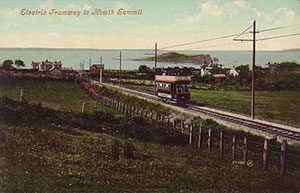BITE-SIZED HISTORY
Published in Issue 2 (March/April 2018), News, Volume 26BY TONY CANAVAN
Where and when did the War of Independence start?
At Soloheadbeg, Co. Tipperary, 1919, I hear you say. Well, in Donegal they recently commemorated what they claim was the first action of the War of Independence. On 4 January 1918, an RIC party was bringing two republican prisoners from Kincasslagh to court martial in Derry. James Duffy and James Ward were in the British Army but had refused to return to the front, declaring their allegiance to the Irish Republic proclaimed in 1916. They were arrested and were being taken to Derry when a party of armed republicans ambushed the RIC escort near Dungloe and freed the two men, who were almost certain to be executed if tried before a military court. As well as a commemoration ceremony, contemporary accounts of the events have been put on-line by Dúchas Thír Chonaill (donegalheritage.com). Is this, then, the first action of the War of Independence?
Naval mystery solved
A century-old Australian naval mystery was solved after the discovery of the wreck of the country’s first submarine, which disappeared during the First World War. The AE1 vanished off the New Guinea island of New Britain on 14 September 1914, with 35 men aboard from Australia, New Zealand and Britain. It was the first Allied submarine loss of the war, and the first wartime loss for the Royal Australian Navy. Over the decades twelve searches for the sub have been carried out, but the AE1 has now been located more than 300m below the surface by a Dutch-owned survey vessel. The exact reasons for the submarine’s sinking remain unclear, however. The AE1 made final contact with another Australian ship at 2.30pm on the day it disappeared. Mystified villagers on a nearby island spoke of seeing a ‘monster’ or ‘devil fish’ that appeared and quickly disappeared into the water. It has always been assumed that the AE1 was not a victim of enemy action, since the only German vessel nearby at the time was a small survey ship, and no wreckage, oil or bodies were found. Further investigation into the cause of the disaster is now possible. The Australian government is trying to contact descendants of those killed on board. Australia is discussing with the Papua New Guinean government the building of a lasting memorial and ways to preserve the site.
Commemorating which ‘State’?
We all knew that 1916 would be the easy centenary to commemorate, with those from 1918 to 1923 likely to evoke controversy of one kind or another. Already there is some confusion over what will be commemorated in 2022. Official spokespersons and others are referring to it as the commemoration of the foundation of the Irish State. This is only partly true, as what was founded in 1922 with the Anglo-Irish Treaty was the Irish Free State, a member of the British Commonwealth, whose authority ultimately derived from the British monarch, who was still the king of Ireland. That state lasted until 1937, when the Irish people exercised their right to sovereignty and in a referendum established a new state. This new state had its own constitution, derived its authority from the Irish people and was a republic in all but name (it officially became a republic in 1949). The Free State ceased to exist. What can be commemorated in 2022 is the centenary of independence, but, strictly speaking, only in 2037 can we commemorate the centenary of the Irish State.
Older than Waterford?
Waterford (Ireland’s oldest city, so called) folk have been shocked by the revelation that Viking remains in Cork are older than theirs. Recent excavations reveal that Cork was a thriving urban centre at least fifteen years before the first Viking house was built in Waterford. Archaeologists have identified a cluster of buildings in South Main Street and St Laurence’s Church, with dendrochronology dating the oldest house to around 1070. This settlement quickly developed into a town and was a significant trading centre in the Norse-Irish world. There are plans to mount an exhibition of material uncovered by the archaeologists in Cork Public Museum.
Local dynasty honoured
Waterford Civic Trust has erected a plaque commemorating a medical and political dynasty active in the city during the 1800s. Thomas Mackesy was born in 1790 and fought at the Battle of Waterloo before becoming the first non-Dublin president of the Royal College of Surgeons in Ireland. His father had an apothecary’s shop on the Mall, where Thomas was first introduced to the medical profession. Thomas’s son, Joseph, played a part in alleviating some of the problems facing the city, in particular the poisonous water supply. He also became a doctor and a member of Waterford Corporation. Two of Joseph’s sons continued the family tradition in politics and medicine. William Lewis Mackesy served as a surgeon in the Leper Hospital, and his brother George Ivie worked in the hospital as well as serving as mayor of Waterford in 1879–80.
All aboard for Howth

Above: A colourised postcard of the Howth tramway in 1907.
















